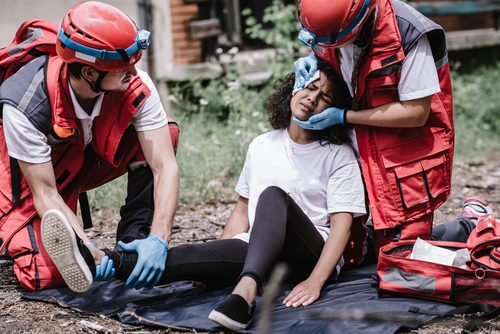Natural disasters are random occurrences, so why do they seem to be more devastating to people of color? A 2014 UN report said that in 1994 more than four billion people were affected by disasters that claimed 1.3 million lives. What do national and international responses to these events reveal about attitudes of racism and poverty? Those weighty questions require more space than can be devoted to them in a short article, but here are a few reasons why people of color are more impacted by disasters.
Related resource: TOP 20 EMERGENCY MANAGEMENT DEGREE ONLINE PROGRAMS
They are Poorer
More people of color lack the resources to manage daily life occurrences than their white counterparts. They do not have the surplus resources to manage even small emergencies such as car trouble or minor illness. When facing impending natural disasters, fewer of these vulnerable people can afford to evacuate. After disasters, they must remain in damaged housing with compromised infrastructure and diminished resources such as lack of a fresh water supply.
They Live in Vulnerable Communities
Many poor communities are not well maintained and are more vulnerable to disaster. Older sewer systems may fail, cracked streets wash away and crumbling buildings collapse. In the 1930s in America, the government graded neighborhoods according to their safety and vulnerability. Most of the at-risk areas were black neighborhoods. Because of the designation, investors avoided the communities, and they were left to disintegrate.
They are Close to Toxic Sites
According to an article in The Shriver Brief, poor communities often are in areas that have been set apart for industry. They are surrounded by zones designated as environmentally toxic. When disasters like floods occur, the boundaries of these adjacent areas expand into the communities themselves. After disasters, the residents must contend with mold and waste from which they cannot afford to move and less afford to remedy.
They Don’t Request Aid
Ironically, technology, or the lack of it, may contribute to the vulnerability of people of color to natural disasters. According to the Kera News website, the fastest way to get aid is to apply online, but the poorest people do not have Internet access. Additionally, requirements to apply for aid may be difficult to navigate for people who may have only an elementary or high school education. The Kera article also says that applicants were being denied for various reasons, many of which are bound up in red tape.
Latino communities may not apply for aid because of fear. Many undocumented people live in poorer communities and don’t apply for assistance out of fear of being deported.
Of course, these are not the only reasons that more people of color suffer when disaster strikes. Additionally, this article does not claim that all relief programs discriminate against them but there are sufficient problems in the systems of disaster preparedness and recovery to warrant a second look by governments and policy-makers. Certainly, countries can do more to make sure that people of color have as great a chance of survival and recovery from natural disasters as do white residents.
